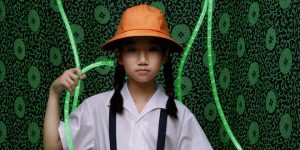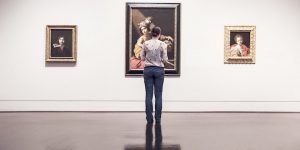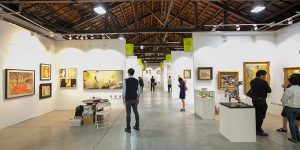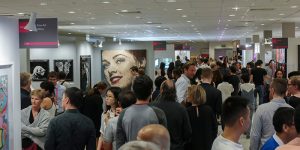Back to the Future: The 4th Asia Pacific Breweries Foundation Signature Art Prize
The Asia Pacific Breweries Foundation aims to stimulate discourse about the converging contemporary art practices of the region.
The Asia Pacific Breweries Foundation (APBF) Signature Art Prize announces its 15 finalists in an exhibition organised by Singapore Art Museum (SAM) that will be held from 25 May to 2 September at the National Museum of Singapore.
Inaugurated in 2008 by the APBF and SAM, the triennial APBF Signature Art Prize recognises outstanding contemporary artists within the Asia- Pacific region and Central Asia, in all forms and mediums. The top prize is worth SGD60,000, and there is a separate People’s Choice Award with a value of SGD10,000, with its winner determined by on-site public votes.
The 4th Signature Art Prize

The panel of distinguished jurors for the fourth edition include Mami Kataoka, Chief Curator of Mori Art Museum, Bose Krishnamachari, President of the Kochi Biennale Foundation, Joyce Toh, Senior Curator at SAM, Dr. Gerard Vaughan, Director of National Gallery of Australia, and independent curator Wong Hoy Cheong. Speaking about the focus on diversity in the panel’s selection of finalists, Katoaka says, “The exhibition provides a glimpse into the multiplicity of political, social and economic histories and realities across Asia Pacific and Central Asia, as told through contemporary art.”
Recognising the visual production emerging from Central Asia, the nomination of artists from this complex and dynamic region sets a new precedent for the prize. In all, 113 nominations were received from 46 countries and territories. Each artist had to meet the prerequisite of representing a significant development in their region’s contemporary art landscape.
The 15 finalists hail from Australia, Hong Kong, India, Indonesia, Japan, Kazakhstan, Malaysia, New Zealand, Singapore, South Korea, Taiwan, Thailand and Vietnam. While the exhibition is not curated to a particular theme, the works selected this year show an interesting congruence in their thematic presentations of minor characters forgotten by history, exploring the biases of historical representation.
Conducting extensive research and utilising archival material, Malaysian artist Au Sow Yee and Singapore artist Shubigi Rao’s interactive installations question how compelling narratives contesting history can be crafted. Au’s ‘The Kris Project’ blends fact and fiction by juxtaposing found footage from existing films with documentaries of wartime Malaya. Rao’s ‘Pulp: A Short Biography of the Banished Book. Vol I: Written in the Margins (2014–2016)’ employs a more formalistic and documentary approach by featuring Rao’s own book on the topic, and a series of videos featuring testimonies from individuals involved in incidents surrounding the destruction of books and libraries.
Several exhibiting artists have chosen to employ abstraction in their works, providing satirical commentary beyond the veneer of utopic depictions of their hometowns. Japanese artist Chikako Yamashiro’s ‘Mud Man’ addresses issues of cultural identity and geopolitics through a video featuring a lyrical and enigmatic narrative of her native Okinawan community of people. Thai artist Thasnai Sethaseree uses a vibrant collage with coloured paper streamers overlaid on a canvas of Buddhist monks’ robes in ‘Untitled (Hua Lamphong)’, enfolding into its surface images of modern architecture the political violence in Thailand and printed texts of the new Thai Constitution.
It is perhaps the everyday symbols of life that most clearly convey the collective spirit of the artists cultural communities. ‘Kaokao #1’, by the Mata Aho Collective from New Zealand, is a sprawling but understated installation of high- visibility tape produced from a form of traditional Māori weaving, featuring a chevron-sharped design called a kaokao. Conflating the military association of the chevron with the traditional use of the kaokao pattern on birthing mats, the artwork is a tribute to the strength and endurance of women.
Over the course of the exhibition, visitors can also look forward to performances, as well as artist and curator dialogue sessions, all of which aim to stimulate discourse about the converging contemporary art practices of the region.









